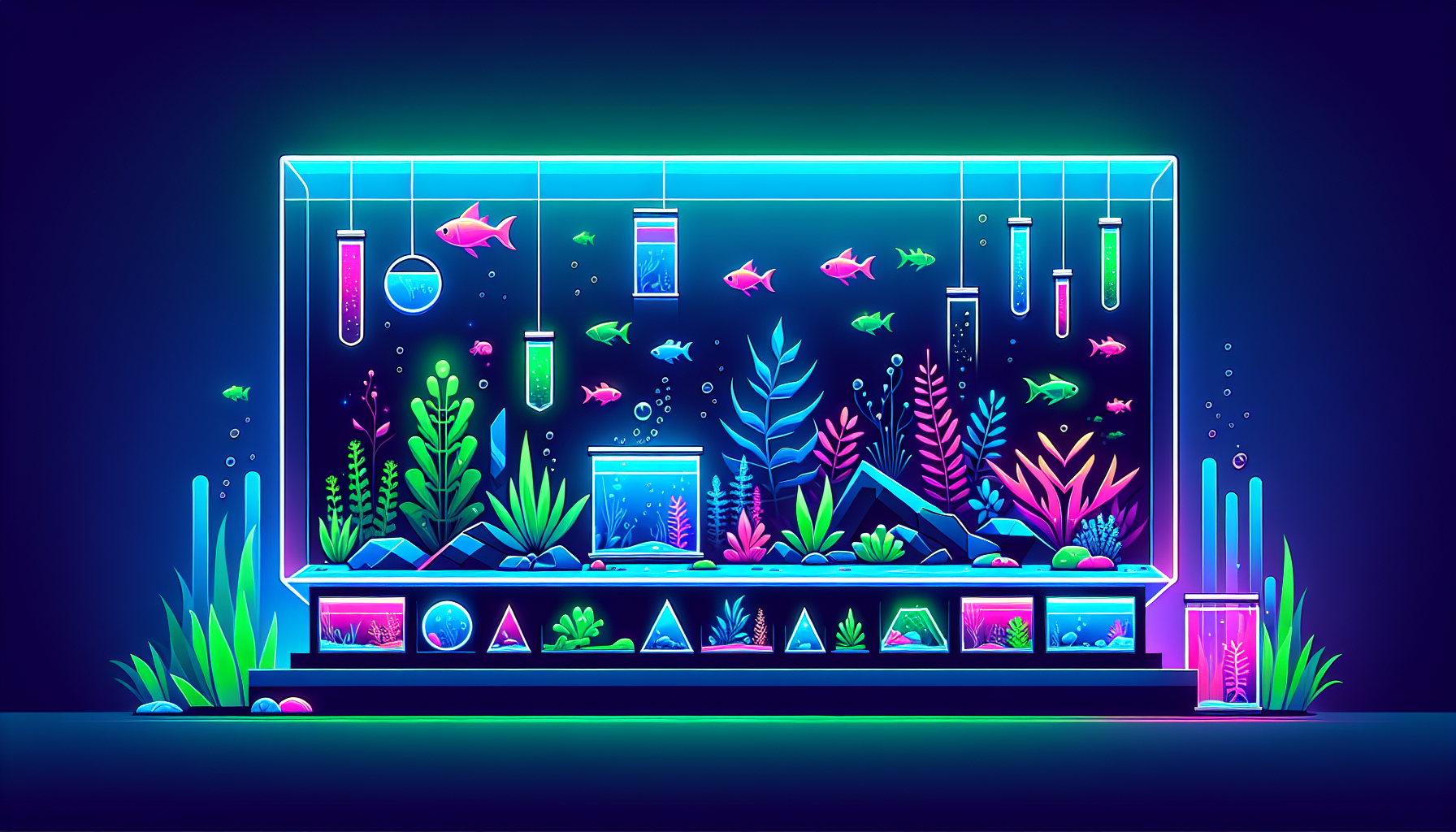The Ultimate Guide to Aquascaping for Beginners: Step-by-Step Tips, Tools, and Best Plants
Ready to dive into the world of aquascaping? Whether you’re dreaming of a lush, nature-inspired aquarium or a minimalist underwater landscape, this comprehensive guide covers everything you need to start aquascaping with confidence. From understanding fundamental design principles to choosing the best plants and equipment, you’ll learn what it takes to create a beautiful, thriving aquarium. Let’s begin your aquascaping journey!
What Is Aquascaping?
Aquascaping is the art of arranging aquatic plants, rocks, driftwood, and substrates in an aquarium to create stunning, natural-looking underwater landscapes. Often referred to as “underwater gardening,” aquascaping encourages creativity and allows hobbyists to craft layouts inspired by natural environments such as forests, mountains, or riverscapes. The goal isn’t just beauty—healthy plant growth and fish welfare are equally important.
Why Start Aquascaping?
- Creativity and relaxation: Design your underwater world and enjoy a peaceful, living art piece.
- Healthy environment: Live plants improve water quality and provide better habitats for fish and shrimp.
- Low maintenance: Well-balanced aquascapes can be easier to manage than traditional fish-only tanks.
For more inspiration and advanced aquascaping techniques, visit our aquascaping styles resource.
Step 1: Plan Your Aquascape Design
Before you buy plants or fill your aquarium, spend some time planning your aquascape. Here are a few classic styles to consider:
- Nature Aquarium: Mimics natural landscapes with dense planting and intricate hardscape (rocks and wood).
- Iwagumi: A minimalist design featuring stones arranged in harmonious layouts and limited plant species.
- Dutch Style: Focuses on rows of vibrant, contrasting plants with little or no hardscape.
Design Principles
Apply these principles to create a visually balanced aquascape:
- Rule of Thirds: Position focal points off-center for a natural look.
- Foreground, Midground, Background: Layer plants to add depth and perspective.
- Color and Texture: Mix leaf shapes and tones for eye-catching variety.
For more details, check out our guide on aquascaping design principles.
Step 2: Choose the Right Aquarium and Equipment
Start with a tank size that fits your space and goals. A 40–60 liter (10–15 gallon) aquarium is ideal for most beginners—large enough for stable water parameters but easy to manage.
Essential Aquascaping Equipment
- Filtration: A quality filter ensures clean, healthy water for plants and fish.
- Lighting: LED aquarium lights support plant growth and show off your aquascape’s colors.
- CO2 Systems (optional): Boosts plant growth and colors, but many beginners start without it.
- Aquascaping Tools: Long scissors, tweezers, and substrate levelers make planting and maintenance easy.
Discover our recommended aquascaping tools and equipment to make setup a breeze.
Step 3: Select Substrate and Hardscape Materials
Your choice of substrate (the material lining the bottom of your tank) and hardscape elements (rocks, wood) sets the stage for your aquascape.
Best Aquascaping Substrates
- Nutrient-rich aquarium soil: Ideal for planted tanks and beginner-friendly.
- Gravel or sand: Good for certain designs, but supplement with root tabs for healthy plant growth.
Hardscape Selection Tips
- Use natural materials: Seiryu stone, dragon stone, and driftwood are popular.
- Follow the “odd number” rule for visual balance—three stones are often more appealing than two or four.
Step 4: Choose Beginner-Friendly Aquatic Plants
Not all plants are equal—select hardy, easy-growing species while you learn the basics. Some top picks include:
- Anubias: Low-light tolerant, attaches to wood or rocks.
- Java Fern: Slow growing, perfect for shading.
- Cryptocoryne: Attractive leaves and great for midground planting.
- Amazon Sword: Bold background plant with large leaves.
- Mosses (like Java moss): Versatile and perfect for covering surfaces.
Learn more about the best aquarium plants for aquascaping on our dedicated guide.
Step 5: Set Up and Plant Your Aquascape
- Install substrate and hardscape: Arrange rocks and wood before filling the tank, then add substrate and create slopes for depth.
- Fill with water: Add water slowly to avoid disturbing your layout; use a plate or plastic sheet to diffuse the flow.
- Plant: Use tweezers to position plants—begin with background, then add midground and foreground species.
- Start equipment: Turn on filter, heater (if needed), and lights. Adjust settings as recommended for your plant and fish choices.
Step 6: Establish a Maintenance Routine
Consistent care keeps your aquascape healthy and beautiful. Maintenance tasks include:
- Regular water changes (20-30% weekly)
- Trimming and replanting fast-growing stems
- Cleaning algae from glass and décor as needed
- Monitoring water parameters (ammonia, nitrite, nitrate)
Read our comprehensive aquascape maintenance guide for practical tips and troubleshooting common issues.
Frequently Asked Questions
Is aquascaping expensive?
Starting small makes aquascaping affordable. Simple setups using beginner plants and minimal equipment are budget-friendly. Costs can rise with rare plants, premium lights, and CO2 systems, but these are optional for most beginners.
Can I keep fish and shrimp in my aquascape?
Absolutely! Once your plants are established (after cycling), small fish and shrimp make excellent additions. Choose species that won’t uproot plants or disturb your layout. Check our beginner fish for aquascaping list for ideas.
How long does it take for an aquascape to mature?
Most tanks begin to look lush and stable in 3–6 months. Patience and regular care are key to breathtaking results.
Start Your Aquascaping Adventure Today!
Learning aquascaping is rewarding, creative, and fun. Follow these beginner steps and you’ll soon have a thriving, stunning underwater garden to enjoy. Don’t forget to check out our blog for more aquascaping tips and inspiration!
Ready to take the next step? Enroll in our beginner aquascaping course for hands-on guidance and community support!



